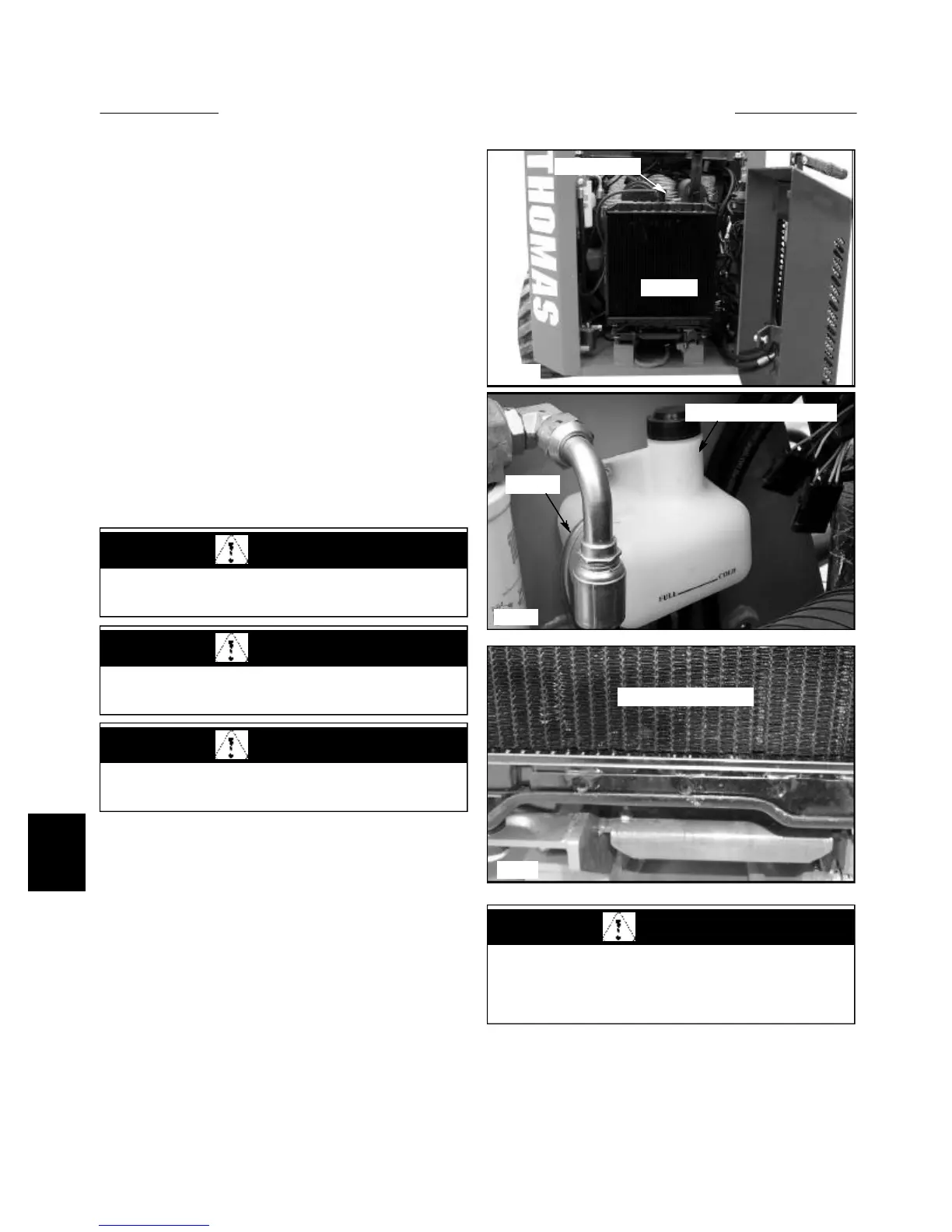Cooling System
Daily Checks:
The loader is equipped with a liquid cooled diesel engine
that requires daily coolant level checks and radiator ser-
vice if necessary.
The cooling system should always be checked when the
engine is cool.
Park the loader on a level surface, lower the boom arms,
engage the parking brake and shut off the engine.
1 Access the engine compartment by opening the rear
door and lifting the engine compartment cover.
2 Visually inspect the radiator cooling fins for dirt or
debris build up that may be blocking air flow through the
radiator. (fig. C3626) Blow any dirt or debris out with
compressed air and / or water. Do not excede 40 psi (2.7
Kg / cm
2
) Any bent cooling fins should be carefully
straightened to prevent core damage.
3 Visually inspect the coolant overflow tank for the
proper coolant level marked on the tank. (fig. C3625)
Add a 50 / 50 mixture of ethylene glycol and water as
required.
4 Remove the radiator cap to verify the coolant level in
the radiator. If the coolant level is below the upper part of
the radiator tank, and the coolant bottle is still full, then
either the radiator cap is defective or there is a coolant
leak in the cooling system. Perform a pressure test of the
cooling system.
Testing the Cooling System:
1 Ensure the radiator is full of coolant.
2 Start the engine operate until warm, NOT HOT!
3 Shut off the engine and carefully remove the radiator
cap. Use extreme caution.
7-8
C3624
C3626
C3625
Radiator cap
Radiator
Coolant over flow tank
Fill line
Radiator cooling fins
ENGINE MAINTENANCE 7.1
WARNING
To prevent eye injury, wear safety goggles when
cleaning with compressed air
CAUTION
To prevent radiator fin damage, do not use air pres-
sure higher than 40 psi (2.7 kg / cm
2
)
WARNING
Do not remove the radiator cap when the engine is
hot.
WARNING
Always use a pre - mixed or diluted coolant to pre-
vent engine over heating, freezing and proper water
pump lubrication
